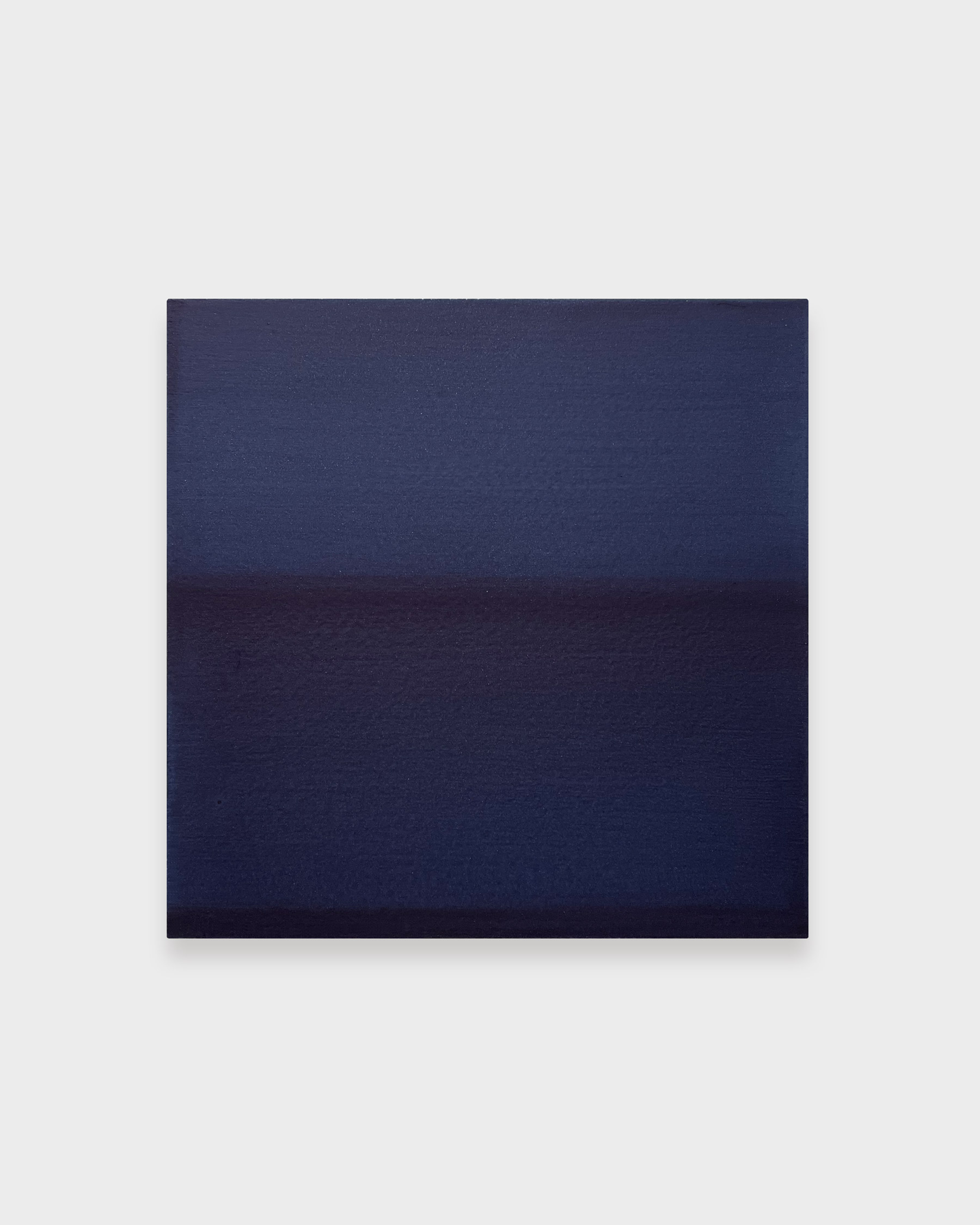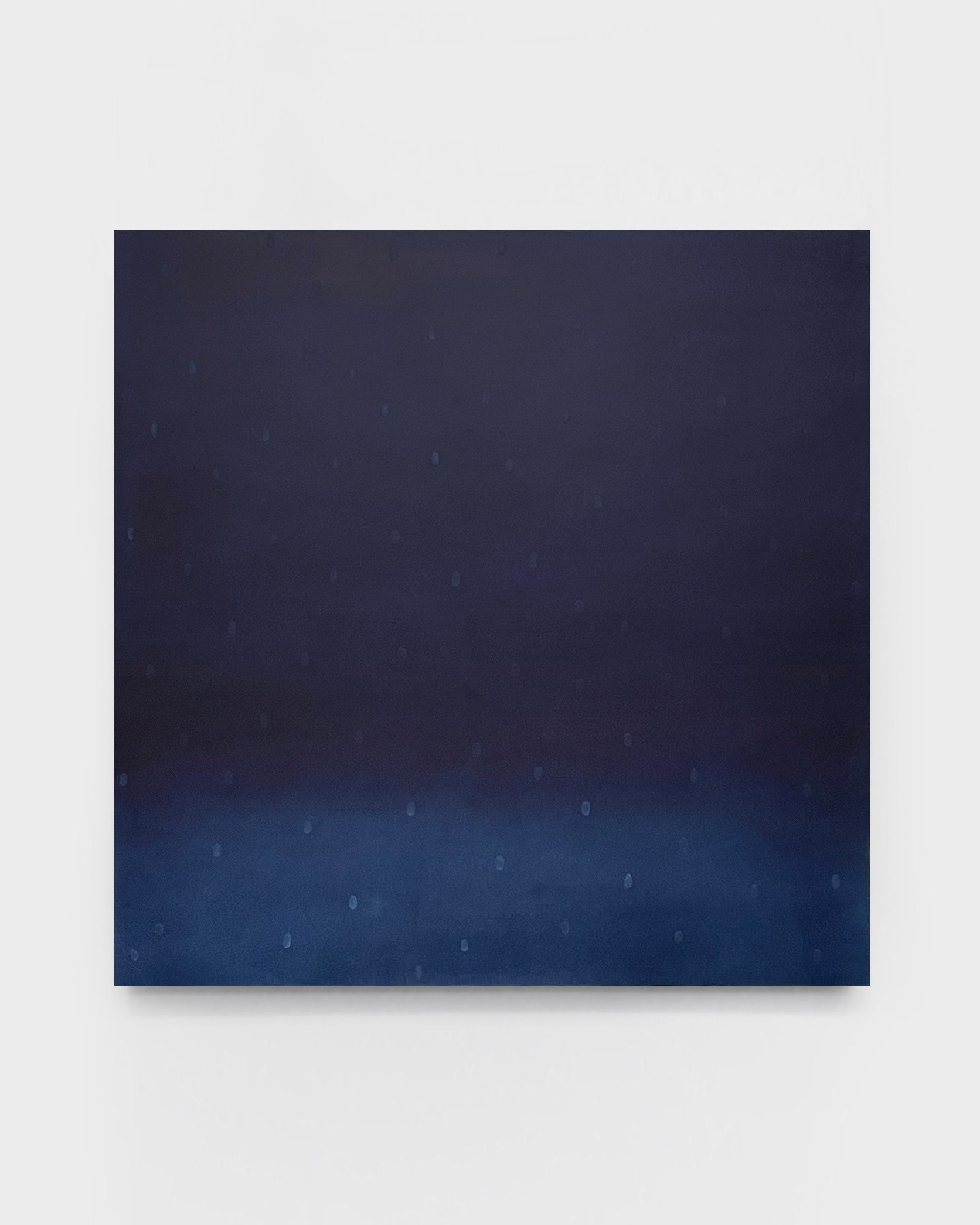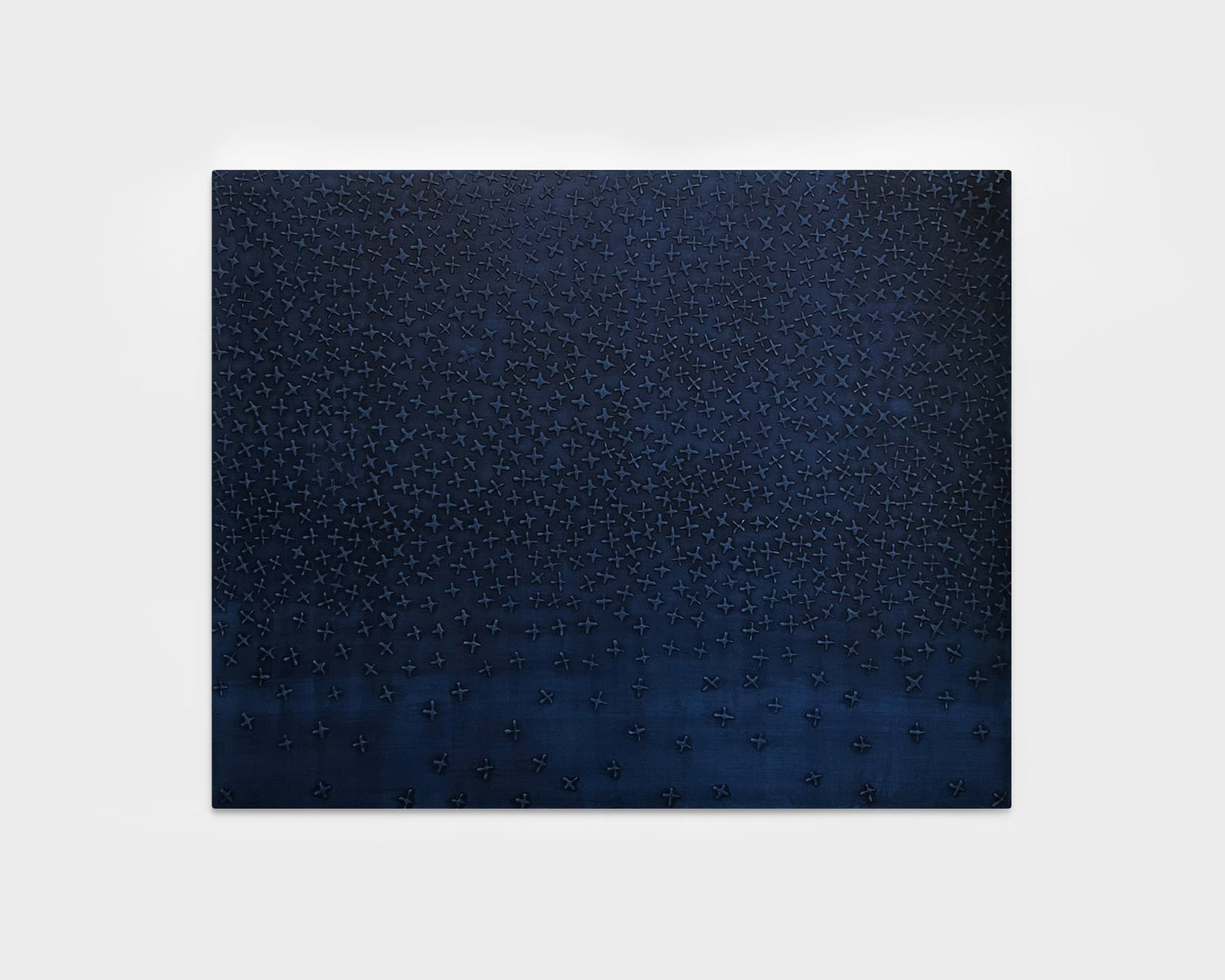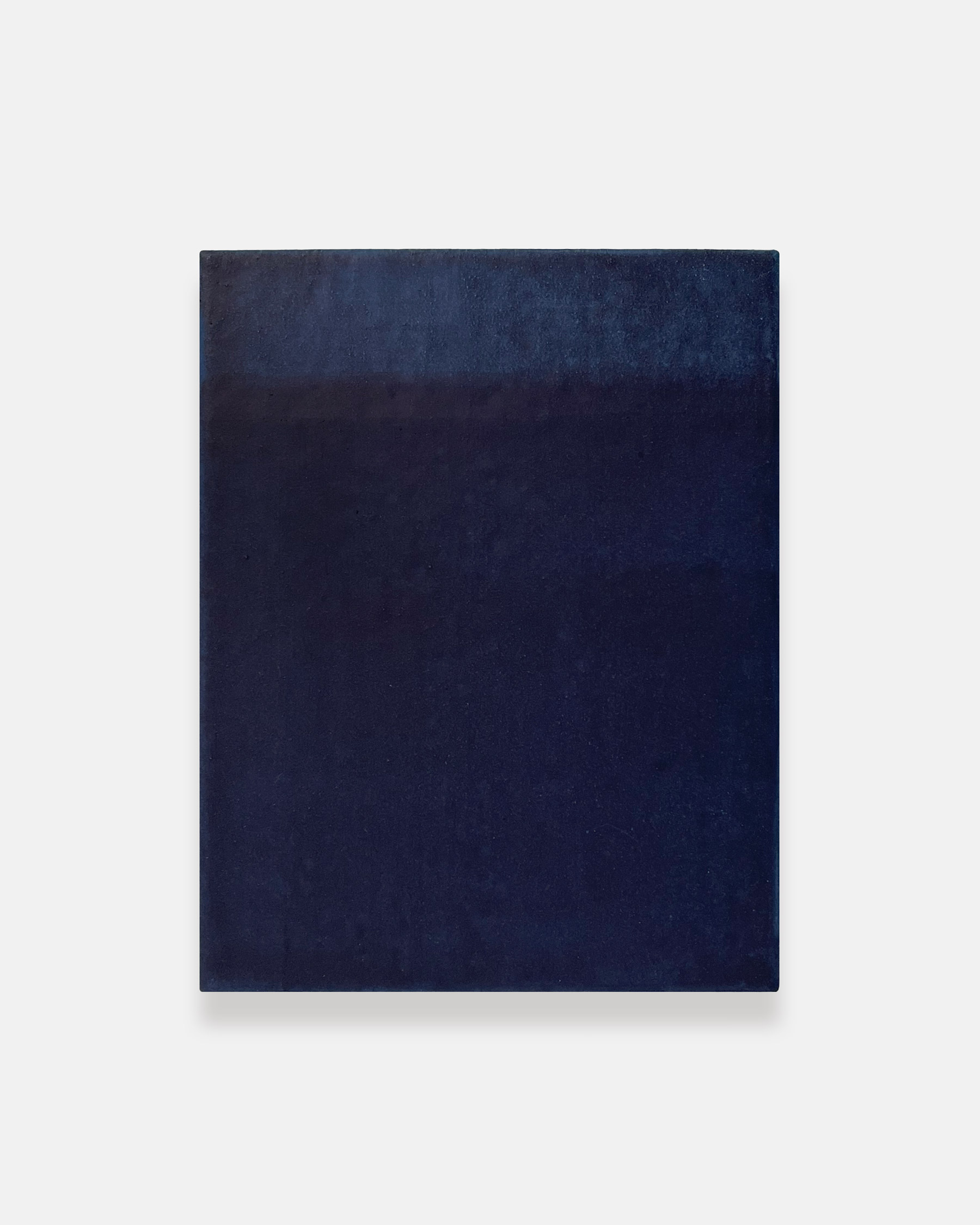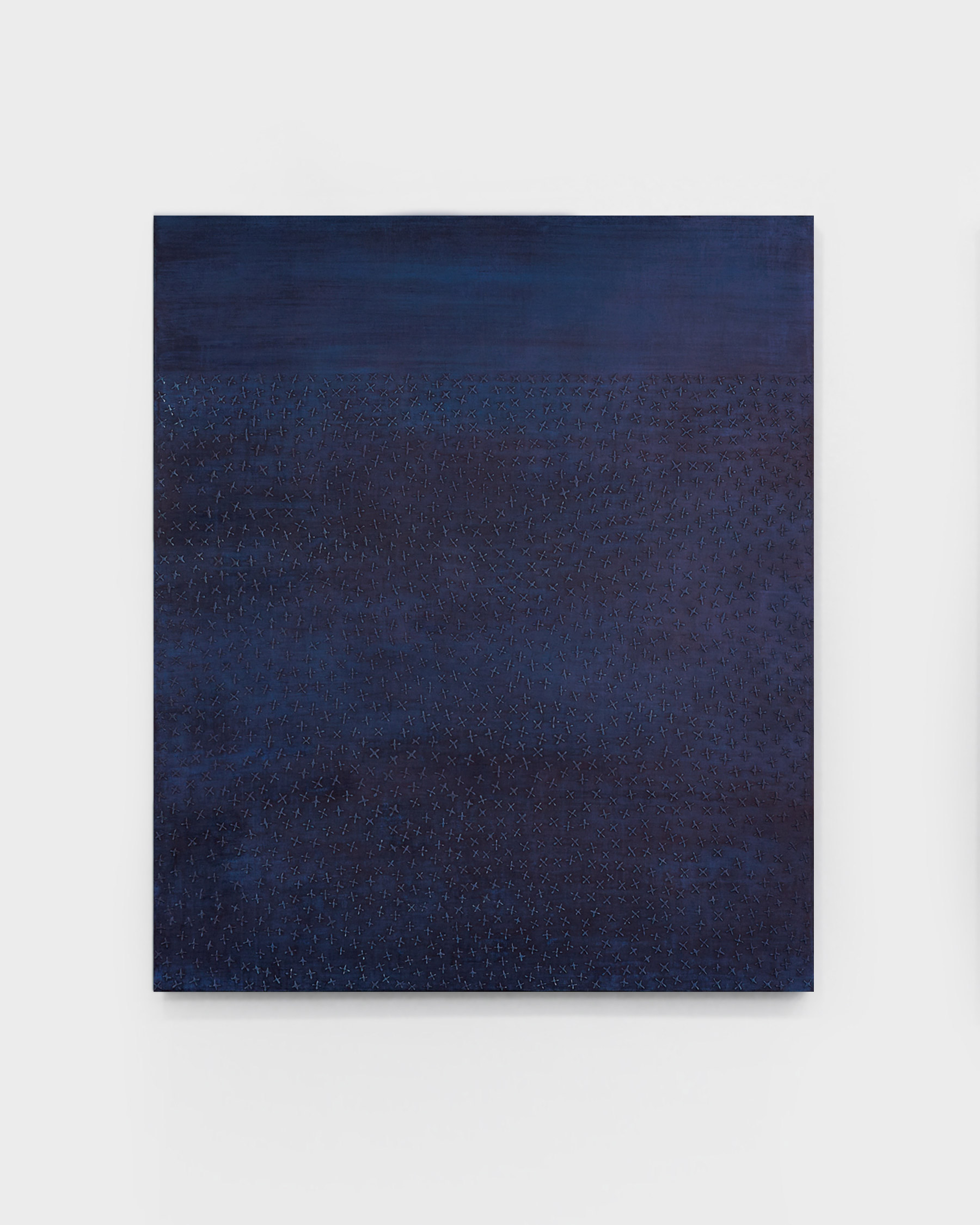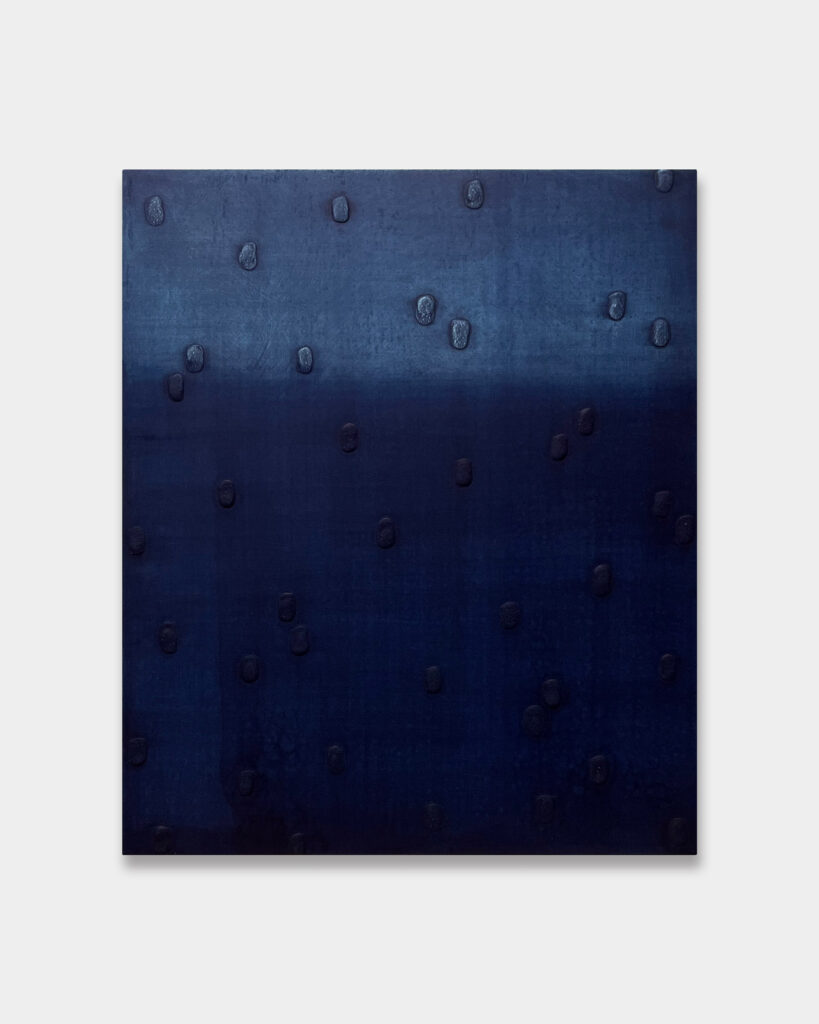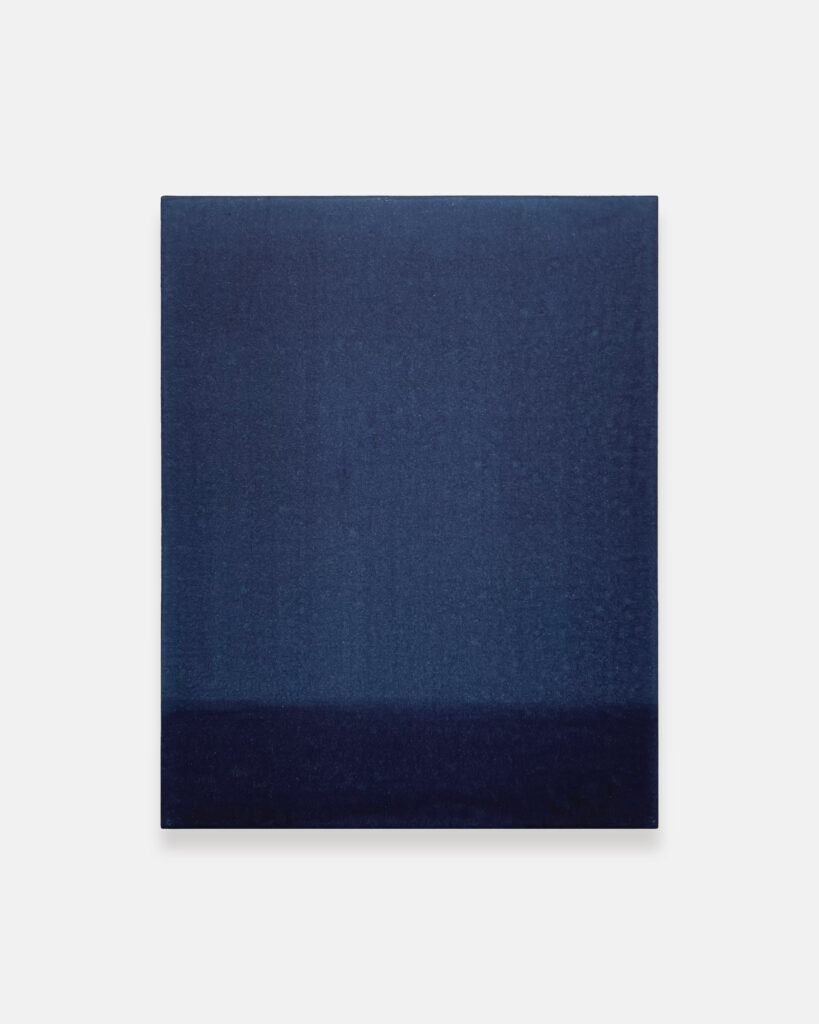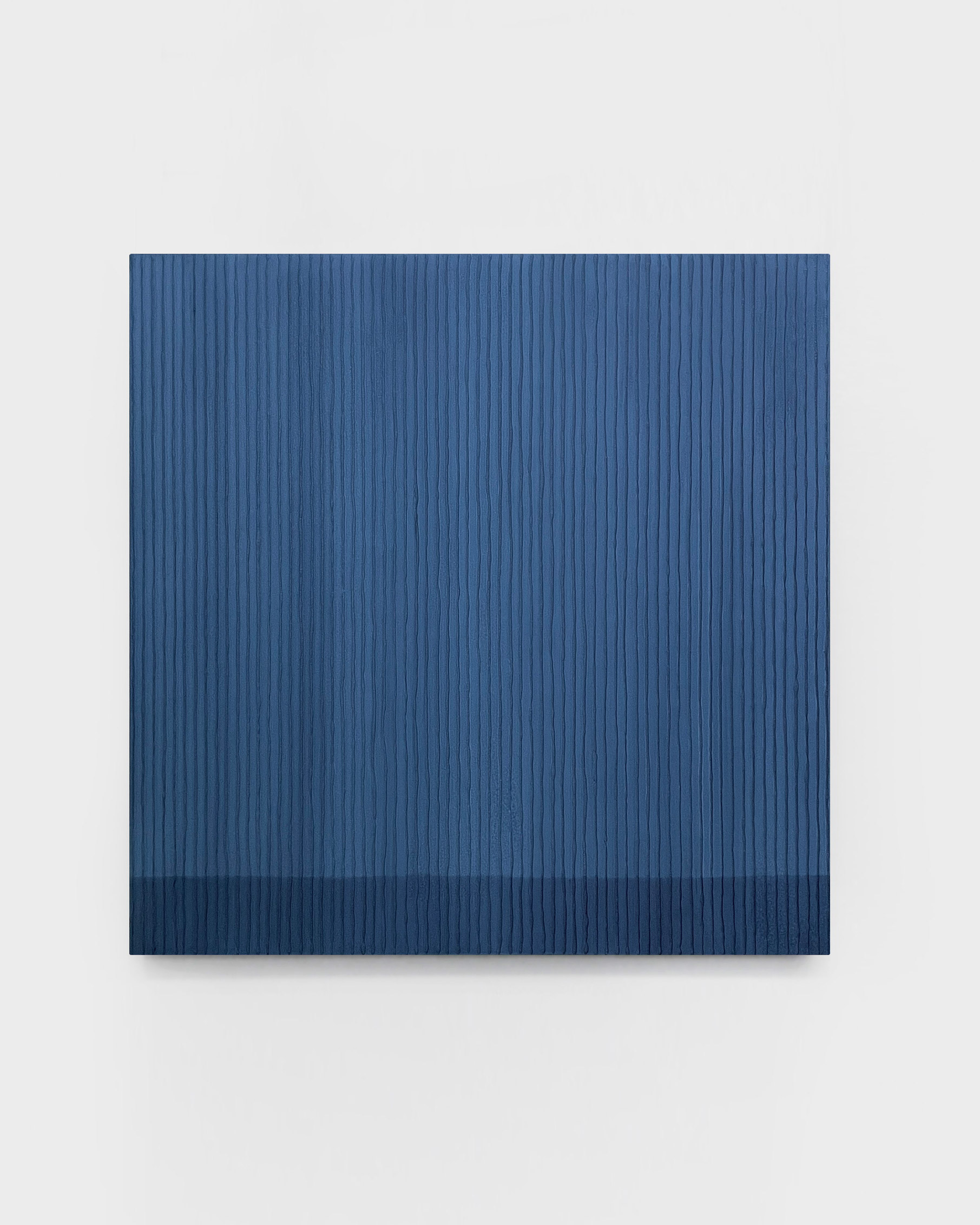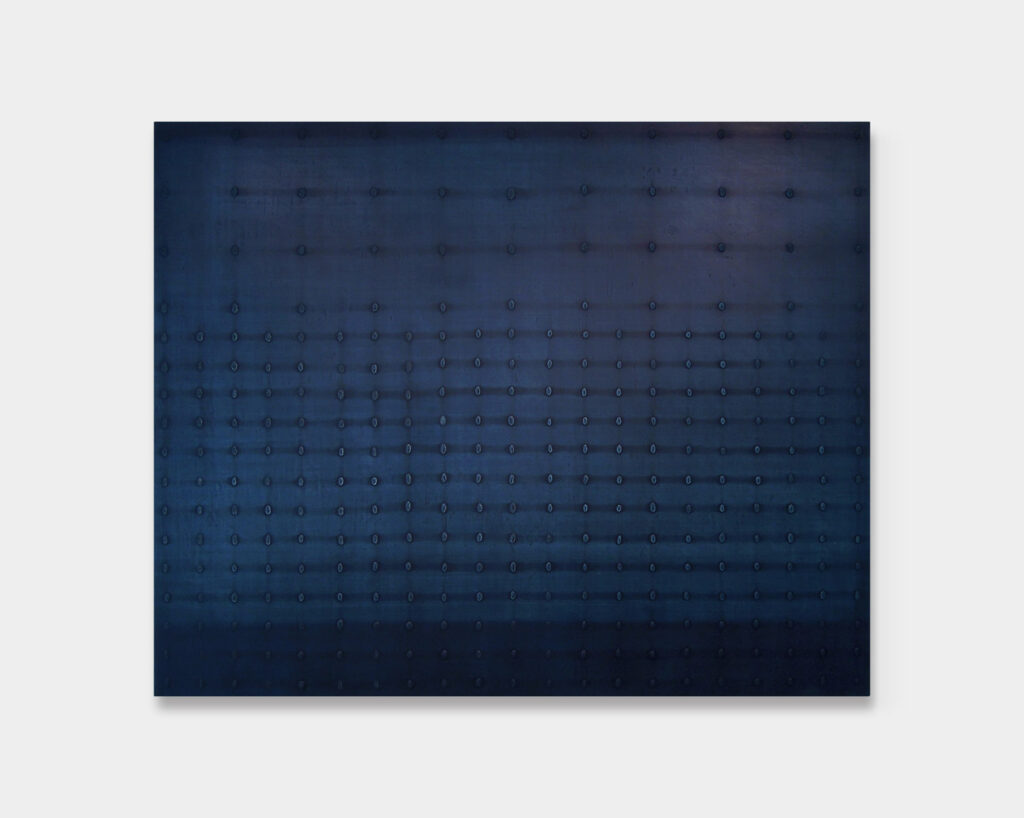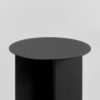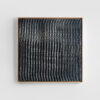In the latest edition of our interview series, we once again dive into the world of minimalist aesthetics. In inspiring conversations with creative minds from the fields of architecture, design, and art, we explore how they are guided by their vision and how they express it in their works. Along the way, they provide us with interesting insights into their creative process and reveal how they perceive and shape the world. This time, I had the pleasure of having an inspiring conversation with Japanese artist Maya Makino.
Makino, born in 1980 in Kanagawa, Japan, is an artist whose work is characterized by a unique devotion to the color Indigo. Her paintings are deeply rooted in personal memories and sensations that she draws from her past. She gives these snapshots form and expression on wooden panels, which she primes with a traditional gesso – a shell lime – creating fine structures and reliefs. Then, she carefully saturates the work with indigo dye.
Maya Makino views her work not as a mere act of applying paint, but as a profound phenomenon that emerges from within the canvas. Color becomes a central element that transcends the physical properties of the material and allows the viewer to connect with the memories and feelings conveyed.
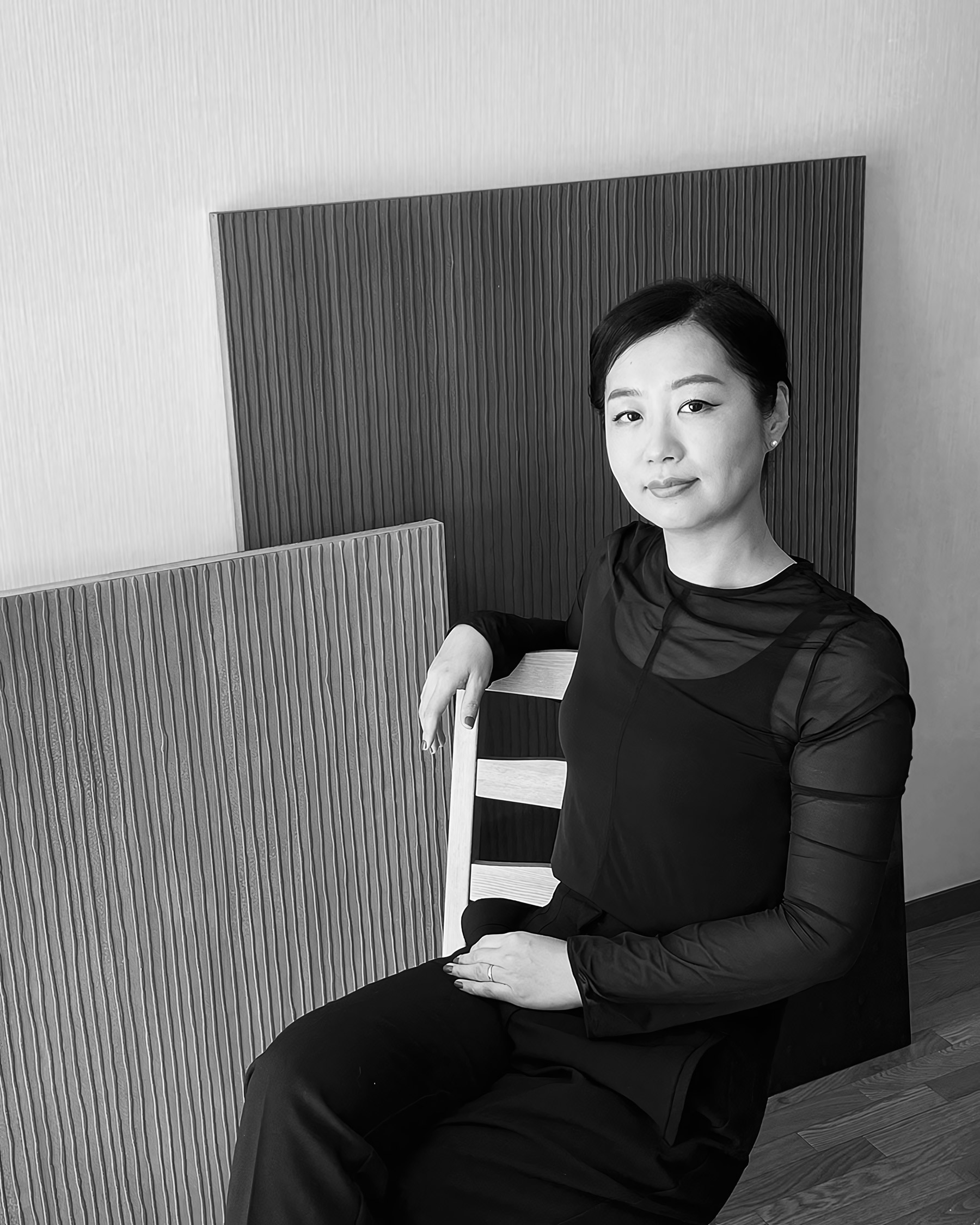
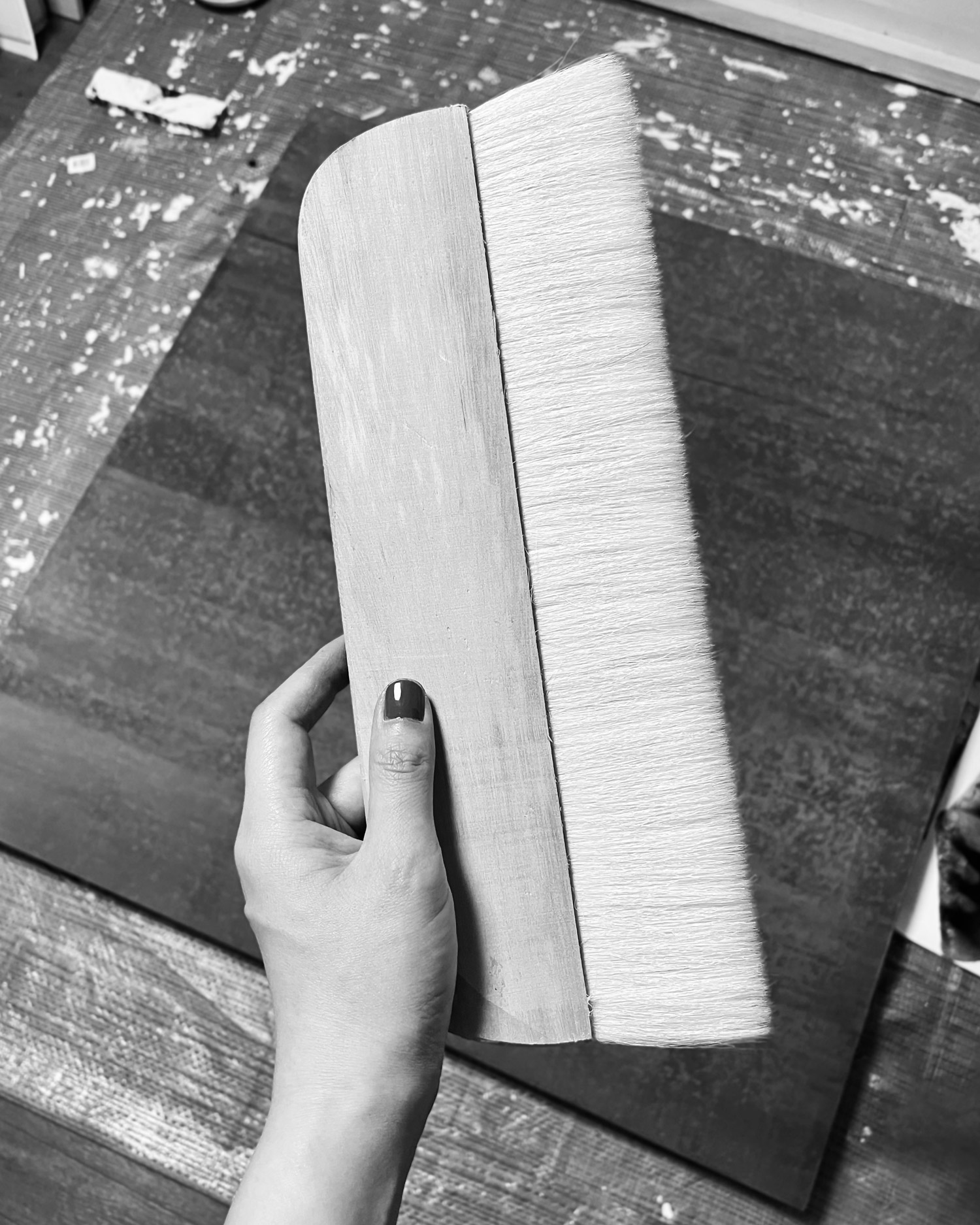
Hello Maya, I’m delighted to talk about your work today! Please tell us how your artistic journey began. Was there a defining moment that led you to become an artist?
Hi Sarah, thank you for taking the time for me. I grew up in an environment where I was exposed to a lot of art as a child, therefore creating something happened naturally to me. I would say that having many relatives in the creative profession also influenced me. When I met a painter who became my mentor, I decided to become an artist at 17 years old. Since then, I studied art professionally at the Tokyo University of the Arts, and I became aware that I had become an artist when a gallery curated my first solo exhibition in 2008.
How would you describe your work to someone who has never seen it?
My paintings are phenomena. They exist as objects, yet what can be seen is the phenomenon of depth of color. Capturing the momentary of a memory in front of my eyes is the source of the image, and the accumulation of the act of replacing the phenomena of night, smell, sound, and so on with the painting is the result in my work.
You once said that you want “to concentrate on being ‘present’ by looking at things from the standpoint of ‘now’.” How do you approach the challenge of being in the ‘now’ while capturing memories in your works?
I have an intense longing for memories of the past, but I can feel them because I am clearly aware of my position of being in the present moment. I am working on a visualization that allows me to experience not only the past itself but also the moment when the memory came to my mind, the present moment itself.
Congratulations belatedly on your debut in the US with the exhibition “Making their Mark: 7 Women in Abstraction” at Heather Gaudio Fine Art. What was the reaction to your work in the United States, and are there differences in the perception of your work between Japanese and American audiences?
Thank you for your congratulations. I am pleased that so many people from NYC visited the gallery and that the exhibition was amazing. I feel that there is a difference in the depth of interest in my work between audiences in Japan and those around the world.
In Japan, there is a preference for new works, while in the U.S. and Europe, past works are seen as part of the artist’s trajectory. Therefore, I sense that a significant difference lies in the interest people have in the artist’s thoughts and background, as well as in my works.
Indigo blue is the only color you use – a highly symbolic color with a deeper meaning in many cultures. What does this color symbolize for you and why did you choose it?
Indigo is one of the traditional colors of Japan, and it is also a practical and familiar color closely associated with the nation’s daily life. The color of indigo varies depending on the type of grass from which the dye is obtained, the country where it grows, and the way it is handled. I see Japanese indigo, which reflects the climate and culture of Japan, as a color that subconsciously allows me to realize my own roots and identity. When I first used indigo, it felt just right in relation to what I wanted to express, so I chose this material.
What do you think – can the reduction to one color mean a limitation or, on the contrary, a freedom in artistic expression?
A wide range of variations are spread within the indigo blue hues, I feel delighted and free when I obtain unexpected coloration.
Can you imagine experimenting with other colors in the future? If so, which ones would those be?
It is possible that in the future I might try to express my work through other colors. I have worked with plant-based dyes other than indigo in the past, and am interested in colors and materials extracted from nature.
Tell us something about your creative process. How do you decide when a work is finished? Is there a particular moment in your creative process when you feel a sense of completion?
The visuals I want to create frequently come to mind instantaneously. I then record them in a sketch and plan further, while I judge the coloring and balance during the actual making process. Waiting for each layer to dry is an important time in the making of the work, and I decide whether or not the work is complete by looking at the state of the work after it has dried.
I see Japanese indigo, which reflects the climate and culture of Japan, as a color that subconsciously allows me to realize my own roots and identity.
You use traditional materials, such as gofun gesso, and techniques such as indigo dyeing in your work. How important is it for you to keep these traditions alive in your art?
The ground materials used in my work are European traditional gesso such as chalk or plaster ground that has been changed to gofun, also regarding indigo, the technique and the method of manufacturing are different from those of indigo dyeing in traditional crafts. I think it is important to incorporate the good aspects of traditional materials of natural origin while arranging and using them in contemporary paintings in order to obtain the possibility of discovering new expressions.
Finally, a more philosophical question: In East Asian philosophy, the concept of “Ma,” which refers to the space in between, plays a significant role. To what extent is this concept reflected in your art?
The short word “間-Ma” can mean “space in between,” “gap,” “margin,” “place: especially a room”, “time: timing, tempo, speed, length,” “relationship,” and so on, depending on the context in which it is used. I think these are sensations that can be acquired when experienced under the culture in which a person has lived, and I feel that they are a kind of qualia that are difficult to verbalize.
These sensations are not only a physical space; they also encompass the sensations that flow through the environment. I believe that this sensory concept of “間-Ma” is reflected in my art in a significant and unconscious way.
Thank you for your time, Maya!
More about Maya Makino
Maya Makino Website
Maya Makino Instagram
Maya Makino at CAI Gallery, Heather Gaudio Fine Art, gallery57, The Untitled Void
